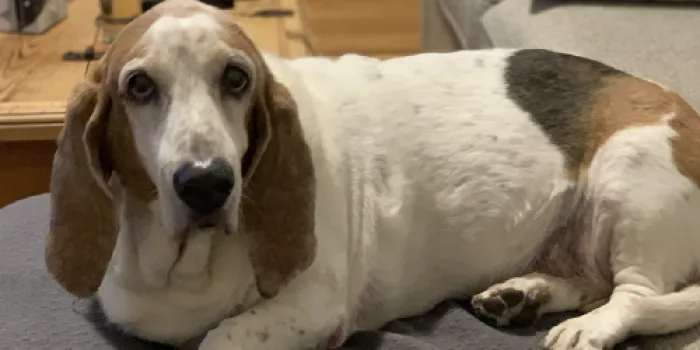When we think of genetic disorders in dogs, hip dysplasia, heart defects and epilepsy are likely some of the ones that come to mind. What probably doesn’t come to mind is von Willebrand disease (VWD), the bleeding disorder caused by missing or defective von Willebrand factor clotting protein. But if your dog has any of the following symptoms, it could have VWD:
• Frequent bloody noses
• Bleeding from the gums
• Prolonged bleeding after an injury or surgery
• Blood in the stool or urine
• Bruising
Anyone familiar with VWD will recognize these signs as the same ones that are common in people. And just as VWD equally affects human males and females, can be diagnosed at any age, and is found in people of any race or ethnicity, any type of dog can have VWD—male or female, old or young, pure breed or mutt. Dogs also may be VWD carriers.
However, over the years veterinarians have found some breeds do have a higher incidence of VWD. Doberman pinschers are most frequently affected, while other common breeds prone to VWD include: German shepherds, golden retrievers, Bernese mountain dogs, Shetland sheepdogs, standard poodles, Pembroke Welsh corgis, basset hounds and miniature schnauzers.
What to do if your dog has bleeding symptoms
If you notice any of the above signs, bring your dog to your veterinarian. However, often the first indication a dog has VWD occurs at the vet’s office itself, when the pet is spayed or neutered and experiences unexpected hemorrhaging. Several tests can be performed to diagnose the condition, including a genetic test and a blood test to measure levels of von Willebrand factor.
Care for a dog with VWD depends on the severity of its condition. Just as in humans, dogs can be diagnosed with type 1, 2 or 3 VWD, with type 1 being the most common and usually the least severe form. The condition isn’t curable, but it is manageable. In dogs with mild to moderate VWD, bleeding as a result of an injury is typically controllable with bandages, sutures or liquid stitches. If a dog needs surgery, it may require an infusion of cryoprecipitate in advance, a blood product that contains von Willebrand factor. Dogs with more severe forms of VWD must be monitored closely for bleeding and may need regular blood transfusions. Owners should avoid giving their pets certain medications—including antihistamines, aspirin, nonsteroidal anti-inflammatory drugs, sulfa-type antibiotics and penicillin—as they can cause bleeding.
Should you screen your dog?
The simple answer is, speak with your vet. If your dog is one of the at-risk breeds and you have noticed any signs of VWD, screening is likely a good idea. If you plan to breed your dog, a VWD screening should be done beforehand. Even if a pet doesn’t have any symptoms it may have VWD, or it could be a carrier. If the test indicates your dog has VWD or is a carrier, it certainly should not be bred with another animal with VWD, and many vets advise not breeding it at all.
Bleeding disorders, dogs and people
It may be surprising at first that a dog can have the same rare genetic bleeding disorder as a person. But when you consider that dogs and humans share some of the same genetic material, it no longer seems so extraordinary. Dogs also have even rarer genetic bleeding disorders like hemophilia A, hemophilia B, factor II and factor VII deficiency. In fact, dogs have a long and storied role in the research and treatment of bleeding disorders, especially hemophilia A. Since 1947, a colony of dogs with hemophilia A and B (as well as some with VWD) has been cared for and studied at The University of North Carolina at Chapel Hill’s Francis Owen Blood Research Laboratory. Among other advances, the UNC colony is responsible for the development of the partial thromboplastin time test used to diagnose hemophilia and the discovery that the gene responsible for hemophilia is on the X chromosome. The colony has also played a part in VWD research over the years.

